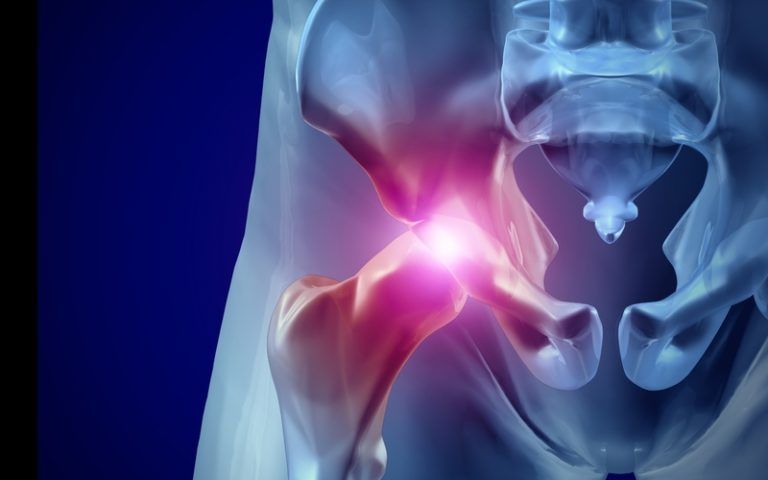Hip Osteoarthritis and Replacement

Hip osteoarthritis is an incredibly common degenerative joint disease that occurs when the cartilage at the end of bones wears down. This cartilage plays a vital role in preventing bone from rubbing bone. When it wears down you suddenly experience long-term pain that is caused by bone rubbing on bone. Although osteoarthritis is common, it requires medical imaging like x-rays and MRIs to be diagnosed. When left untreated it can cause lifelong pain.
Types of Osteoarthritis
There are two types of osteoarthritis. Primary osteoarthritis affects the fingers, thumbs, spine, hips, and knees. Secondary arthritis occurs after a joint is injured or inflamed. The result of this injury leads to a change in the makeup of cartilage.
Here’s How Osteoarthritis Affects the Joint
One of the most common issues that hip osteoarthritis causes is extreme pain, which ultimately impacts a patient’s ability to walk. Pain occurs in a variety of forms and can be sharp or a dull ache. You’ll find that your hip is also often stiff.
What causes osteoarthritis of the hip?
While the cause of hip osteoarthritis is unknown, there are several factors that play a role in whether someone develops it or not. These factors include whether a person is overweight, their age, and if they’ve had any injuries to their hip and joint area. Genetic factors can also play a role in whether someone develops osteoarthritis. This might include defects in cartilage development and joints that did not form properly.
Hip Replacement Surgery
Patients who are healthy, but suffering from osteoarthritis might be a good candidate for hip replacement surgery. During this procedure patients are put under general anesthesia. This relaxes the muscles and puts patients into a deep sleep.
Once the doctor starts the procedure he will make an incision along the thigh bone to expose your hip joint. He will then remove a portion of the joint and replace it with an artificial unit. This artificial unit is attached using cement or a bonding material that allows the remaining bone to grow around the new joint. The doctor will determine what is best for your needs.
After Hip Replacement Surgery
After hip replacement, you’ll likely be in the hospital for a few days. You may have a catheter to help you go to the restroom. Most shocking to patients is that physical therapy begins the day after surgery.
The doctor wants you walking around with the help of a cane, walker, or crutches to get the blood flowing and promote healing. This is not a surgery where you lay in bed for weeks afterward to recover.
While you’re encouraged to be active after surgery, it’s important to remember that you just went through a major surgery. For anywhere from six to twelve months you should avoid pivoting on your leg and not bend at the hip past 90 degrees. The physical therapist will show you how to maneuver in the best way possible so that you don’t damage your hip or cause further issues down the line.


Recent Comments